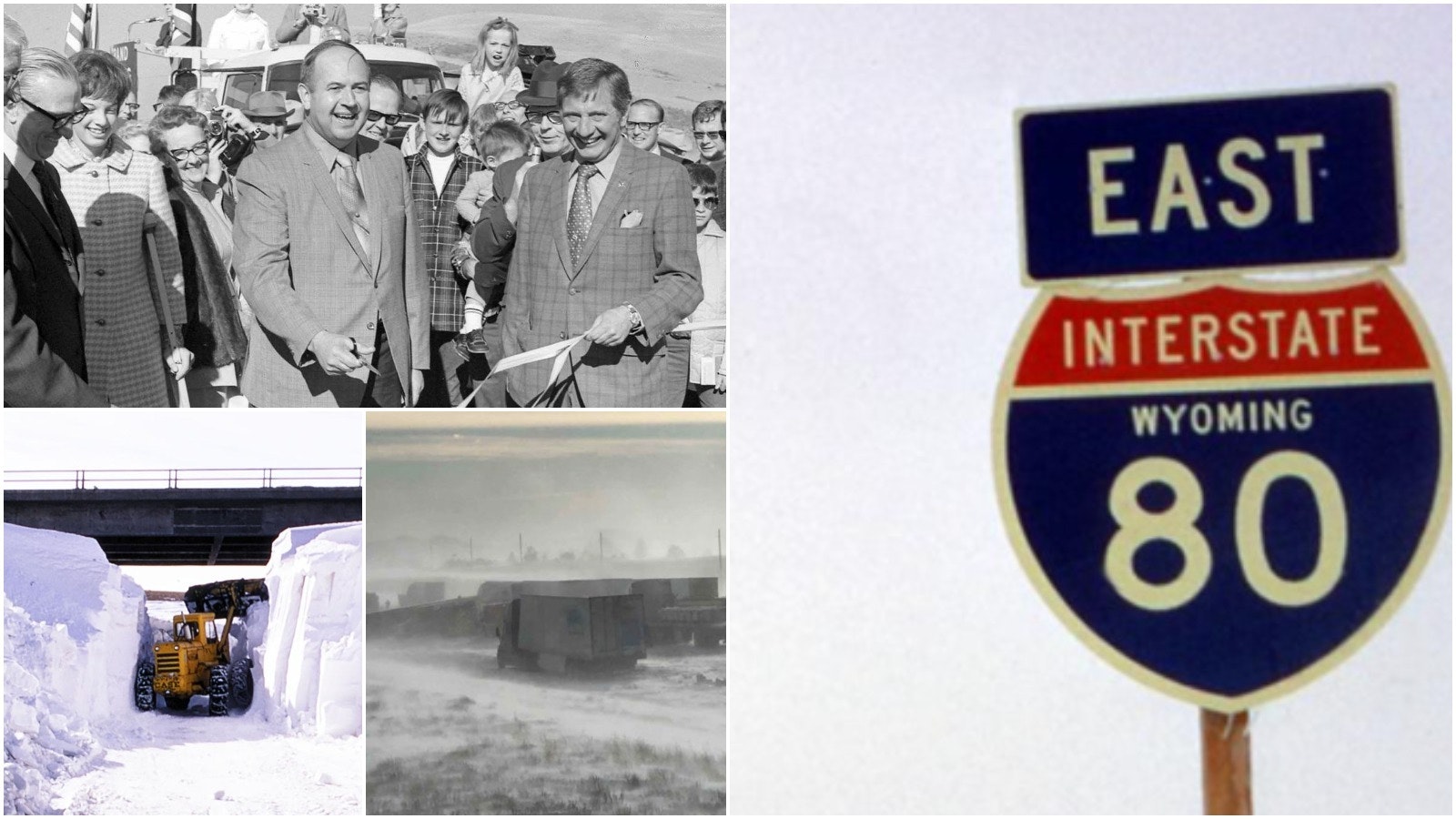The vital and strategically important coast-to-coast Interstate 80 carries thousands and thousands of cars and trucks across the nation daily. Sometimes that traffic comes to a chilling halt in Wyoming.
A particular stretch between Rawlins and Laramie is so notorious it took on the title Snow Chi Minh Trail. That stretch opened 50 years ago this month and was the last major section of Wyoming’s portion of I-80 to be completed.
The only remaining portion of I-80 yet to be completed was a short section east of Cheyenne that opened on May 4, 1977.
When I-80 opened between Laramie and Walcott Junction, it was a big deal. This 77-mile stretch of highway was the longest section of Interstate to open at one time in the nation.
There is a simple reason why it is the longest stretch of Interstate to open. It was routed a considerable distance from the existing parallel U.S. 30 that passes well to the north of I-80.
There was no way to route traffic from the old two-lane U.S. 30 to newly completed sections of Interstate.
In 1956, the Federal Bureau of Public Roads was planning the location of I-80 and determined it could save 19 miles between Laramie and Walcott Junction by routing the highway on a more direct route through Arlington and Elk Mountain.
The Wyoming Highway Commission learned of the plan and responded in opposition to the plan. Locals informed officials that it would be a bad idea to locate a road near Arlington because of the problem of blowing and drifting snow.
The highway commissioners also wanted to protect the economies of the U.S. 30 towns of Rock River, Medicine Bow, and Hanna, that would be bypassed by the new highway.
Then began the multi-year debate between the state and the federal government that eventually landed on the floor of the U.S. Senate in 1959, where a bill sponsored by Wyoming’s senators Joseph O ’Mahoney and Gale McGee to allow states to make routing decisions was debated.
The Bureau of Public Roads argued that the majority of highway users would prefer a shorter route through Wyoming if one were available. The Federal Highway Act of 1956 stipulates that the highways should be as direct as possible to meet the needs of the nation.
The Wyoming Highway Department conducted a series of traveler interviews over the course of a year and determined that nearly 90% of motorists traveling between Rawlins and Laramie preferred the option of a more direct route, and they indicated they had no plans to stop in any of the U.S. 30 towns.
Wyoming’s case to locate I-80 along U.S. 30 quickly faded.
When the topic of hazardous weather was discussed, the Feds responded that modern snow removal equipment would be able to maintain the new highway.
The state gave in, and construction on the 77-mile section of highway began in the summer of 1966. The route was so controversial Federal Highway Director Frank Turner had a big map of the area on the wall of his Washington office.
It took four years to complete the nation’s longest section of Interstate to open at one time. To celebrate this momentous occasion, a ribbon-cutting ceremony was held at the Arlington exit on the morning of Saturday, October 3, 1970.
With more than 400 people in attendance, including federal highway officials, Governor Stan Hathaway and Wyoming State Highway Commissioner Gus Fleischli cut the ribbon officially opening the road.
It was a pleasant autumn morning, but four days later, a storm wreaked havoc on travelers. It turned out that it was going to take a lot more than “modern snow removal equipment” to keep I-80 open and safe.
This October 7, 1970, closure was the first of many. The Wyoming Highway Department’s (WYDOT) conventional wintertime maintenance program and its standard snow fence design were no match for the new highway.
The Laramie-Walcott section forced WYDOT to find new and innovative ways to help keep I-80 safe and open. I-80 west of Laramie became the world’s foremost testing ground for wintertime road maintenance techniques.
The highway department developed an all-new snow fence design that became an industry standard and was the first to implement the use of road closure gates on a major U.S. highway.
WYDOT implemented the variable message sign and the variable speed limit program on this section of I-80. Though the efforts by WYDOT have led to a safer road, I-80 still can be treacherous. After all, this is no ordinary highway. It is legendary.
Book Info – In celebration of the 50th Anniversary of the completion of the Laramie-Walcott section of I-80, the Wyoming State Historical has published a special 50th Anniversary Edition of the Snow Chi Minh Trail: The History of Interstate 80 between Laramie and Walcott Junction.
Written by John Waggener, an archivist at the University of Wyoming’s American Heritage Center, this special Golden Anniversary expanded edition includes many updates, new interviews, additional critically important historical information, additional maps, and photographs made available to the author after the release of the first edition in 2017.
Even if you have the earlier edition of the book, this book will be a great compliment to your copy. Copies of the book are available at select bookstores across the state, or you can contact the Wyoming State Historical Society. Email linda@wyshs.org to request copies. The author can be contacted at waggener@uwyo.edu





